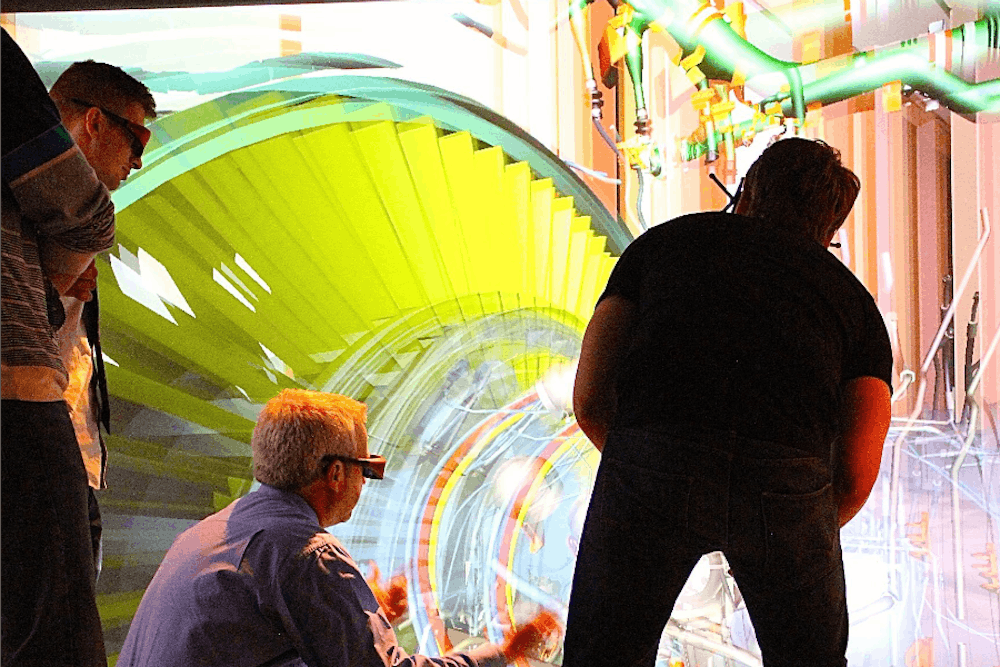By Matt Hartshorn, For The Miami Student
Miami University's Armstrong Institute for Interactive Media Studies (AIMS) occupies a section of the second floor of Laws Hall, but to many students, the AIMS Center is somewhat of a mystery.
Professor Glenn Platt, the director of the AIMS Center, believes interactive media is important to every field of study.
"Interactive media studies is an interdisciplinary field," he said. "We're interested in how digital technology is disrupting traditional disciplines."
That means that the AIMS Center's focus is on how other majors are impacted by changing technology.
That was part of the reason the AIMS Center first started at Miami in 1995.
"The economy changed, and it was no longer sufficient to specialize in one field," Platt said. "Students needed a broad context, including an understanding of digital workings."
Miami's interactive media program's wide range of applications makes it unlike any other program on campus.
The AIMS Center has several divisions that design and work with digital technology. Some include game design, user interfaces, and digital marketing and business.
One of these centers is the Smale Interactive Visualization Center, which is concerned with 3-D images, video and motion capture. Professor Eric Hodgson is the director of the Smale Center, which is one of just a handful of other technological centers that focus on projects in mobile development, augmented reality, usability and educational gaming.
The Smale Center has a variety of technology, including hands-on digital nursing training and 3-D immersive virtual reality with a technology called Oculus Rift. The technology involves a head-mounted set of "goggles" that allow the user to see a fully developed, virtual world.
One of the programs is a roller coaster running through a medieval village, and the visuals can cause feelings of uneasiness.
"We've had some people fall to the ground," Hodgson said.
Another of the programs involves a constantly changing environment. When you look away from one area, the images change and a new world appears.
"It's poised to be the next big thing in entertainment," Hodgson said.
Facebook recently acquired Oculus Rift, and it and other virtual reality systems are shaping up to be the next frontier in gaming.
Another technology at the Smale Center involves 3-D walking through the solar system, where you can spend time floating in the middle of the asteroid belt or admiring the rings and moons of Saturn.
Also, a hands-on training program for nurses teaches how to properly take care of a contaminated patient.
Students can become involved with the AIMS Center in many ways. Beside the interactive media major, there is also a co-major, minor, graduate studies and an MFA.
"We have 65 different section offerings, 300 plus majors and minors, one thousand students in our classes a year," Platt said.
Student organizations and paid work are also available for interested students. IMS classes are held in various buildings across campus and are open to all students during open registration.
The Center also does a San Francisco program where students can spend a semester in the Bay Area and Silicon Valley working with startup companies. Many more opportunities are on the horizon.
"In the near future, we plan to add a major in games and expand the San Francisco program to Cincinnati and Chicago in January 2015 and then New York and Austin in January 2016," he said. "We're also looking to add more faculty and client projects."
Client projects are a big part of the work done at that AIMS Center. Faculty and students have helped students such as Coca-Cola and Home Depot with digital work. Recently, AIMS assisted the CDC with an Ebola training program for nurses.
Director Platt welcomes students of all majors and if they are interested in AIMS, he can help them find a client project to assist with. He would like to see involvement from more students, in a field that has relevance for all majors today.
"It's the foreign language everyone needs to know," he said.

